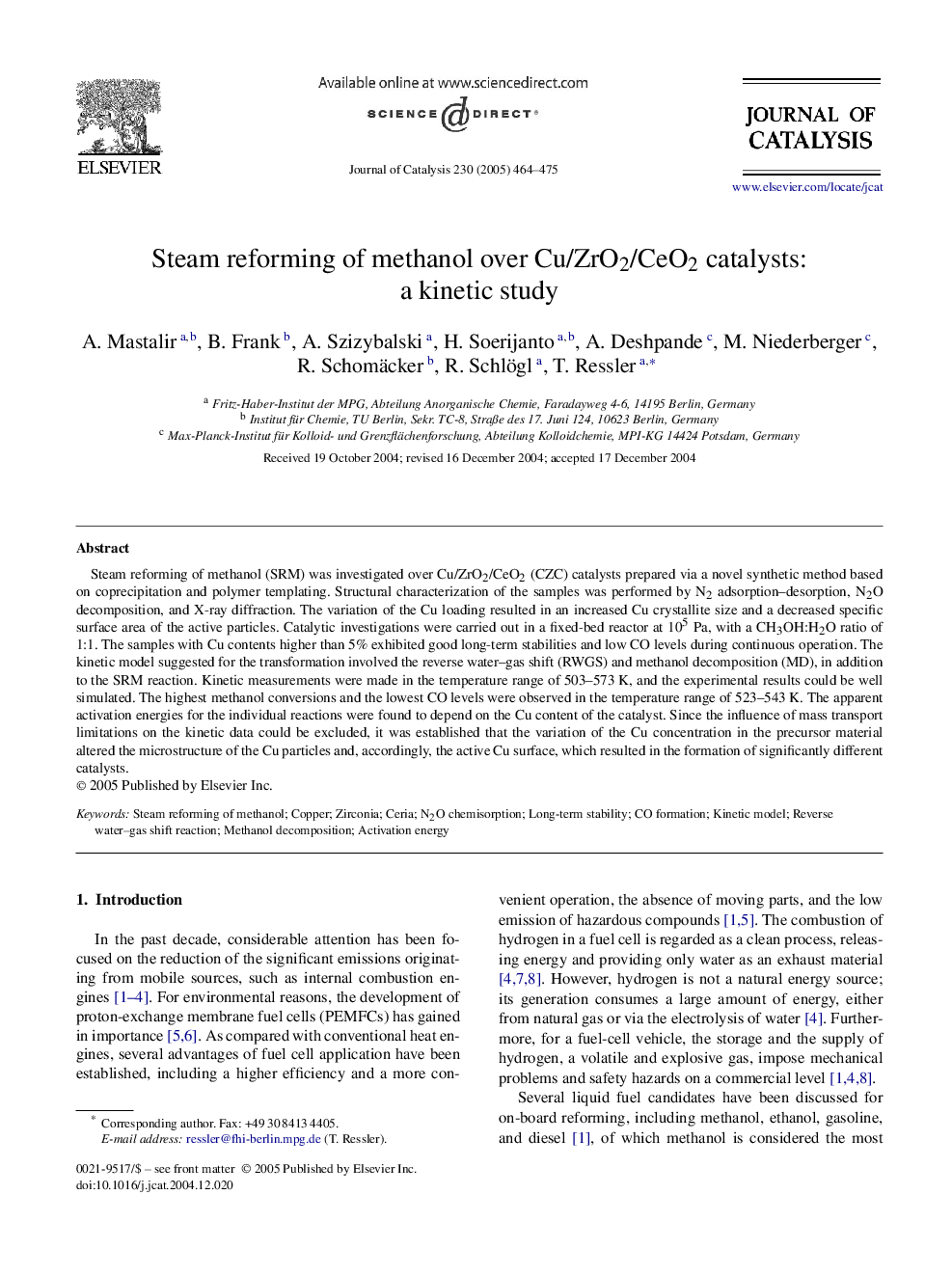| Article ID | Journal | Published Year | Pages | File Type |
|---|---|---|---|---|
| 9614232 | Journal of Catalysis | 2005 | 12 Pages |
Abstract
Steam reforming of methanol (SRM) was investigated over Cu/ZrO2/CeO2 (CZC) catalysts prepared via a novel synthetic method based on coprecipitation and polymer templating. Structural characterization of the samples was performed by N2 adsorption-desorption, N2O decomposition, and X-ray diffraction. The variation of the Cu loading resulted in an increased Cu crystallite size and a decreased specific surface area of the active particles. Catalytic investigations were carried out in a fixed-bed reactor at 105 Pa, with a CH3OH:H2O ratio of 1:1. The samples with Cu contents higher than 5% exhibited good long-term stabilities and low CO levels during continuous operation. The kinetic model suggested for the transformation involved the reverse water-gas shift (RWGS) and methanol decomposition (MD), in addition to the SRM reaction. Kinetic measurements were made in the temperature range of 503-573 K, and the experimental results could be well simulated. The highest methanol conversions and the lowest CO levels were observed in the temperature range of 523-543 K. The apparent activation energies for the individual reactions were found to depend on the Cu content of the catalyst. Since the influence of mass transport limitations on the kinetic data could be excluded, it was established that the variation of the Cu concentration in the precursor material altered the microstructure of the Cu particles and, accordingly, the active Cu surface, which resulted in the formation of significantly different catalysts.
Keywords
Related Topics
Physical Sciences and Engineering
Chemical Engineering
Catalysis
Authors
A. Mastalir, B. Frank, A. Szizybalski, H. Soerijanto, A. Deshpande, M. Niederberger, R. Schomäcker, R. Schlögl, T. Ressler,
